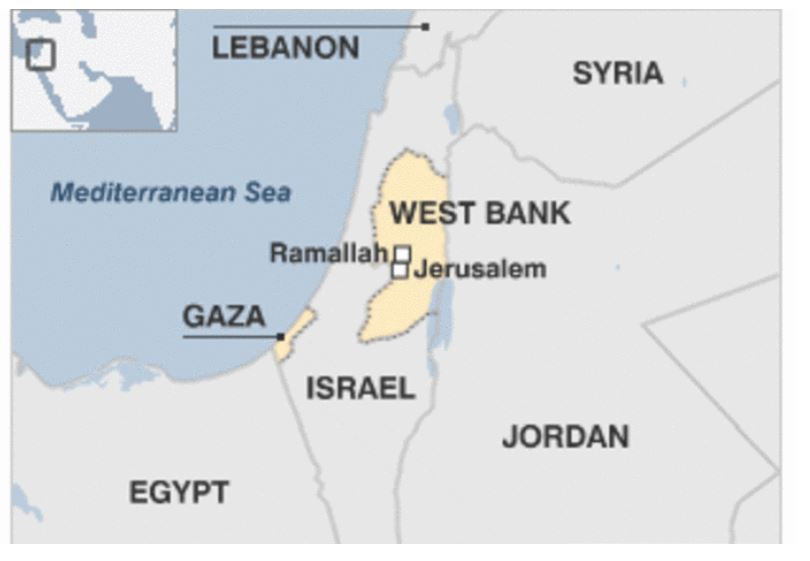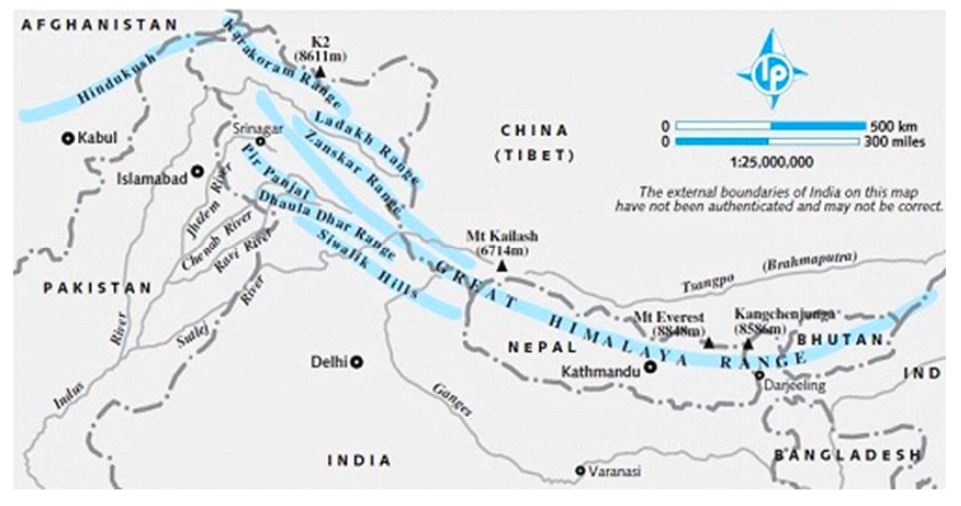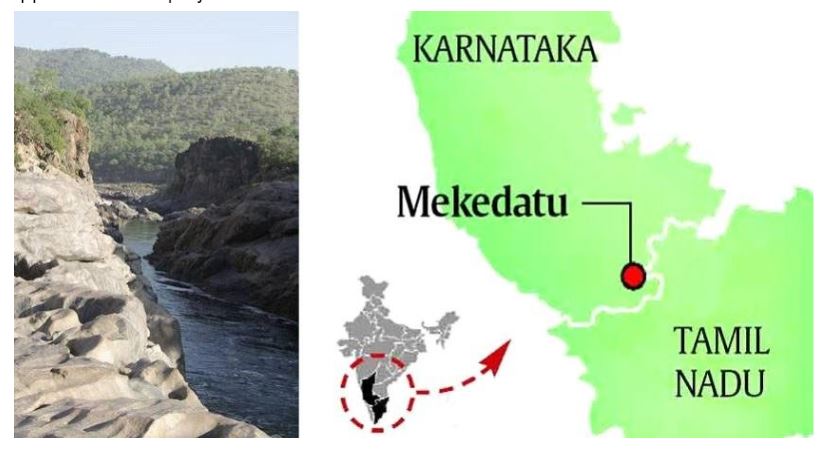IASbaba Daily Prelims Quiz
For Previous Daily Quiz (ARCHIVES) – CLICK HERE
The Current Affairs questions are based on sources like ‘The Hindu’, ‘Indian Express’ and ‘PIB’, which are very important sources for UPSC Prelims Exam. The questions are focused on both the concepts and facts. The topics covered here are generally different from what is being covered under ‘Daily Current Affairs/Daily News Analysis (DNA) and Daily Static Quiz’ to avoid duplication. The questions would be published from Monday to Saturday before 2 PM. One should not spend more than 10 minutes on this initiative.
This is a part of our recently launched, NEW INITIATIVE IASbaba’s INTEGRATED REVISION PLAN (IRP) 2020 – Road Map for the next 100 Days! FREE INITIATIVE!
We will make sure, in the next 4 months not a single day is wasted. All your energies are channelized in the right direction. Trust us! This will make a huge difference in your results this time, provided that you follow this plan sincerely every day without fail.
Gear up and Make the Best Use of this initiative.
Do remember that, “the difference between Ordinary and EXTRA-Ordinary is PRACTICE!!”
To Know More about the Initiative -> CLICK HERE
SCHEDULE/DETAILED PLAN – > CLICK HERE
Important Note:
- Don’t forget to post your marks in the comment section. Also, let us know if you enjoyed today’s test 🙂
- After completing the 5 questions, click on ‘View Questions’ to check your score, time taken and solutions.
Test-summary
0 of 5 questions completed
Questions:
- 1
- 2
- 3
- 4
- 5
Information
To view Solutions, follow these instructions:
- Click on – ‘Start Test’ button
- Solve Questions
- Click on ‘Test Summary’ button
- Click on ‘Finish Test’ button
- Now click on ‘View Questions’ button – here you will see solutions and links.
You have already completed the test before. Hence you can not start it again.
Test is loading...
You must sign in or sign up to start the test.
You have to finish following test, to start this test:
Results
0 of 5 questions answered correctly
Your time:
Time has elapsed
You have scored 0 points out of 0 points, (0)
| Average score |
|
| Your score |
|
Categories
- Not categorized 0%
| Pos. | Name | Entered on | Points | Result |
|---|---|---|---|---|
| Table is loading | ||||
| No data available | ||||
- 1
- 2
- 3
- 4
- 5
- Answered
- Review
-
Question 1 of 5
1. Question
Consider the following statements:
- Israel is land locked country in the West Asia
- West bank western border touches the Mediterranean sea
Which of the following is/are correct?
Correct
Solution (d)
Israel is located at the eastern end of the Mediterranean Sea in Western Asia. … To the west of Israel is the Mediterranean Sea, which makes up the majority of Israel’s 273 km (170 mi) coastline, and the Gaza Strip.
The West Bank is a landlocked territory near the Mediterranean coast of Western Asia, bordered by Jordan to the east and by Israel to the south, west and north. The West Bank also contains a significant section of the western Dead Sea shore.
 Incorrect
Incorrect
Solution (d)
Israel is located at the eastern end of the Mediterranean Sea in Western Asia. … To the west of Israel is the Mediterranean Sea, which makes up the majority of Israel’s 273 km (170 mi) coastline, and the Gaza Strip.
The West Bank is a landlocked territory near the Mediterranean coast of Western Asia, bordered by Jordan to the east and by Israel to the south, west and north. The West Bank also contains a significant section of the western Dead Sea shore.

-
Question 2 of 5
2. Question
Which of the following is not true about Phytoplankton?
Correct
Solution (d)
Phytoplanktons: They are tiny microscopic floating plants found in water bodies.
- Study of phytoplankton biomass is done by analyzing chlorophyll-a, a dominant pigment found in phytoplankton cells.
Significance of Phytoplanktons:
- They contribute more than half of the oxygen in the environment.
- They reduce global warming by absorbing human-induced carbon dioxide.
- They also serve as the base of the ocean food chain.
- They are important bioindicators regulating life in oceans. Their abundance determines the overall health of the ocean ecosystem.
Incorrect
Solution (d)
Phytoplanktons: They are tiny microscopic floating plants found in water bodies.
- Study of phytoplankton biomass is done by analyzing chlorophyll-a, a dominant pigment found in phytoplankton cells.
Significance of Phytoplanktons:
- They contribute more than half of the oxygen in the environment.
- They reduce global warming by absorbing human-induced carbon dioxide.
- They also serve as the base of the ocean food chain.
- They are important bioindicators regulating life in oceans. Their abundance determines the overall health of the ocean ecosystem.
-
Question 3 of 5
3. Question
Consider the following statements with respect to SIDBI:
- It is the principal development financial institution for MSME sector in India.
- It is a Statutory Body
Which of the following is/are incorrect?
Correct
Solution (d)
SIDBI is the principal development financial institution for promotion, financing and development of Micro, Small and Medium Enterprises (MSME) sector in India.
- It was established on April 2, 1990 through an Act of Parliament thus, it is statutory body.
- It is headquartered in Lucknow, Uttar Pradesh.
- SIDBI aims to facilitate and strengthen credit flow to MSMEs and address both financial and developmental gaps in MSME eco-system across the country.
- It co-ordinates functions of institutions engaged in similar activities.
- Currently, the shares of SIDBI are held by Central Government and 29 other institutions including public sector banks (PSBs), insurance companies owned and controlled by Central Government.
Incorrect
Solution (d)
SIDBI is the principal development financial institution for promotion, financing and development of Micro, Small and Medium Enterprises (MSME) sector in India.
- It was established on April 2, 1990 through an Act of Parliament thus, it is statutory body.
- It is headquartered in Lucknow, Uttar Pradesh.
- SIDBI aims to facilitate and strengthen credit flow to MSMEs and address both financial and developmental gaps in MSME eco-system across the country.
- It co-ordinates functions of institutions engaged in similar activities.
- Currently, the shares of SIDBI are held by Central Government and 29 other institutions including public sector banks (PSBs), insurance companies owned and controlled by Central Government.
-
Question 4 of 5
4. Question
Arrange the following mountain ranges from North to South:
- Zaskar range
- Ladak range
- Karakoram range
- Pirpanjal range
Which of the following order is/are correct?
Correct
Solution (a)
 Incorrect
Incorrect
Solution (a)

-
Question 5 of 5
5. Question
Mekedatu dam dispute is related to which river?
Correct
Solution (b)
Mekedatu, meaning goat’s leap, is a deep gorge situated at the confluence of the rivers Cauvery and its tributary Arkavathi.
- Ontigondlu is the proposed reservoir site, situated at Ramanagara district in Karnataka about 100 km away from Bengaluru. It is the midst of the Cauvery Wildlife Sanctuary.
- The Rs. 9,000 crore project aims to store and supply water for drinking purposes for the Bengaluru city. Around 400 megawatts (MW) of power is also proposed to be generated through the project.
- It received approval from the erstwhile Ministry of Water Resources for the detailed project report and is awaiting approval from the Ministry of Environment, Forest and Climate Change (MoEFCC).
- The approval from MoEFCC is crucial because 63% of the forest area of the Cauvery Wildlife Sanctuary will be submerged.
- Tamil Nadu has approached the Supreme Court (SC) against the project even if Karnataka has held that it would not affect the flow of water to Tamil Nadu.
- In June 2020, during the Cauvery Water Management Authority’s meeting, Tamil Nadu reiterated its opposition to the project.
 Incorrect
Incorrect
Solution (b)
Mekedatu, meaning goat’s leap, is a deep gorge situated at the confluence of the rivers Cauvery and its tributary Arkavathi.
- Ontigondlu is the proposed reservoir site, situated at Ramanagara district in Karnataka about 100 km away from Bengaluru. It is the midst of the Cauvery Wildlife Sanctuary.
- The Rs. 9,000 crore project aims to store and supply water for drinking purposes for the Bengaluru city. Around 400 megawatts (MW) of power is also proposed to be generated through the project.
- It received approval from the erstwhile Ministry of Water Resources for the detailed project report and is awaiting approval from the Ministry of Environment, Forest and Climate Change (MoEFCC).
- The approval from MoEFCC is crucial because 63% of the forest area of the Cauvery Wildlife Sanctuary will be submerged.
- Tamil Nadu has approached the Supreme Court (SC) against the project even if Karnataka has held that it would not affect the flow of water to Tamil Nadu.
- In June 2020, during the Cauvery Water Management Authority’s meeting, Tamil Nadu reiterated its opposition to the project.















